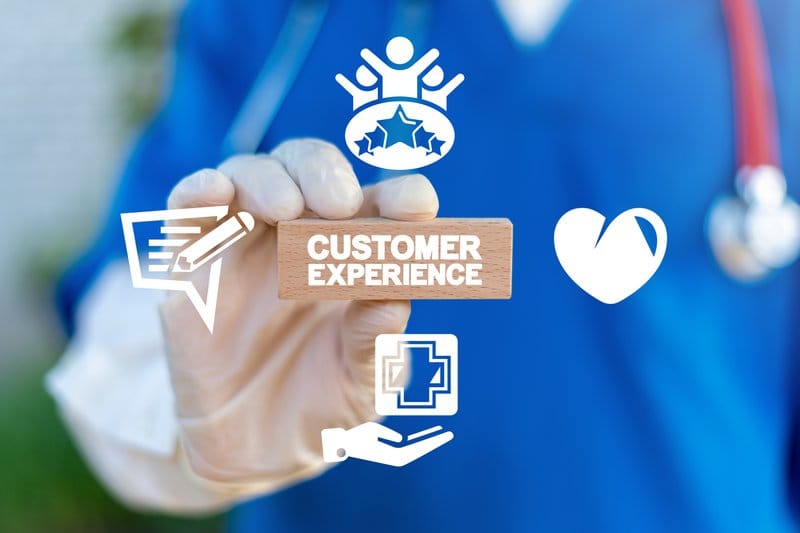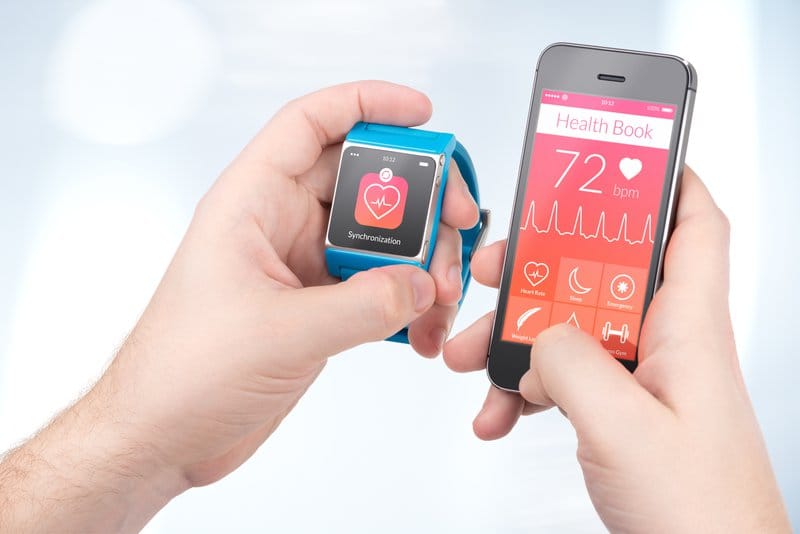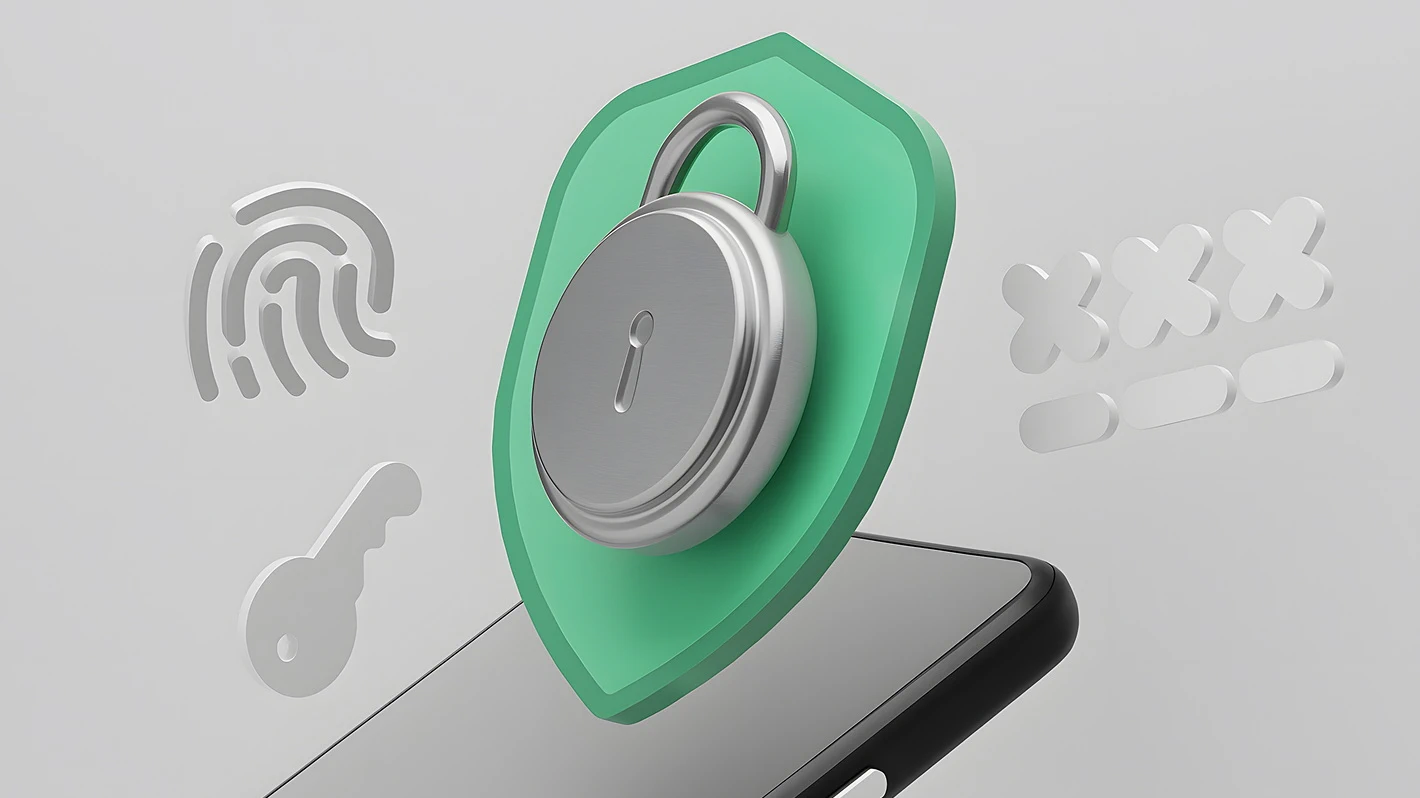Through seemingly endless quarantine periods and citywide mandates, it’s all too easy to feel as if time has stood still for the past two years. On an individual level, perhaps that’s not entirely untrue. But, for the global health industry – as contagions spread and hospitals faced unprecedented demand – the coronavirus pandemic has been a period of forced, rapid transition. Medical professionals, and the systems they rely on to save lives, have had to work smarter and harder than ever before to provide an exceptional customer experience in healthcare.
As we all know, in an attempt to restore both public health and a semblance of normalcy, once face-to-face interactions have migrated to the digital space. This mass migration includes practices such as remote work, online school, and automating any aspect of life possible. Though many of these changes made us feel less connected, it reigns true that digitizing some industries can reap great benefits for all. Here at Helpware, we believe the digitization of business – specifically healthcare organizations – poses the opportunity to foster invaluable lines of communication between patients and providers.
Many health organizations and establishments have already invested many resources into technologies to optimize processes. Online billing, facility upgrades, and digital communication tools/platforms are just the beginning of these evolvements. Despite these transitions, there remains a gap between where businesses’ customer experiences currently are and where they should be.

This is largely because healthcare businesses in the United States lack a deep understanding of what their customers want and need. Healthcare organizations need to not only begin surveying and analyzing patient encounters, but also any other social factors that may affect healthcare-related purchasing decisions.
Having this variety of data is critical in improving customer experience in healthcare because it gives healthcare organizations a more in-depth view of what customers are looking for. How can you adequately provide a service and exceed (much less, meet) customer satisfaction if you don’t even ask them what it is they want? This knowledge will help strengthen brands, increase profitability, and expand market shares. Additionally, it will help improve patient outcomes, which is the ultimate goal of healthcare organizations and value-based care models.
How Is Customer Experience (CX) Changing The Healthcare Industry?
Today, customers deeply value the experiences they have with the companies they purchase from and work with. This demand has led to entire industries implementing customer service strategies specifically designed to ensure the best possible customer experience.
Needless to say, the healthcare industry has always been a customer-oriented industry. It’s simple: no people, no profit. However, customer experience in healthcare has historically taken a backseat to, well, keeping us alive. Fortunately for modern society, sweeping technological advancements – utilized by the most well-equipped medical professionals to date – now have the physical aspect of patient care covered. Moving forward, the healthcare industry can (and must) follow in the footsteps of every other customer-centric sector to provide outstanding service.
Currently, despite being responsible for the most important part of life, few of us report positive interactions with our healthcare providers. According to a study conducted by Accenture, half of healthcare consumers believe that a single negative digital encounter has the potential to spoil their entire experience with a healthcare provider. How did such a jarring discrepancy in public trust in the healthcare industry come to be? More importantly, how do we fix it?
Here at Helpware, we assert that emphasizing empathy is key to successfully elevating customer experience in the healthcare space. Patients (you know, people) want to know that their respective doctors and healthcare professionals genuinely care for them. As mentioned, the heightened focus on customer experience in healthcare is largely due to the shift toward the digital space and the need for it to have a human element. Healthcare organizations need to make this transition as seamless as possible, as well as work to bridge any gaps that may arise between the digital and physical spaces.
As such, the healthcare industry continually experiences disruptions by rapid market shifts, and organizations are required to adapt accordingly to survive. Apart from ensuring customer experiences run smoothly, they also need to ensure all platforms used for providing healthcare services are functioning optimally. Utilizing a hospital email database can aid in maintaining effective communication channels, ensuring that updates and vital information reach the relevant stakeholders efficiently.
Digital healthcare experiences, particularly through Telehealth and telemedicine models, aren’t necessarily new, but the coronavirus pandemic has undoubtedly popularized them. Due to obvious safety concerns, more customers have opted to meet with their doctors and healthcare providers virtually. Although COVID-19 outbreaks are now more easily managed due to global vaccination rollouts, Telehealth and telemedicine models are here to stay.

Experts predict that Telehealth and telemedicine models will soon become the dominant forms of healthcare. As healthcare organizations continue to develop tools to digitize healthcare processes and systems (thus amplifying consumer voices), customer experience in healthcare will also soar.
Why CX Matters in Healthcare?
As stated, elevating customer experience is widely prioritized in countless sectors, namely retail industries. In today’s world, customers expect the same level of care from their healthcare call center providers as they receive in a shopping mall or a restaurant. Needless to say, these industries have notable differences. For example, the retail industry is generally individually-tailored to the customer’s wants and needs. Conversely, the healthcare industry usually takes a more standardized, unilateral approach towards patients.
Additionally, patients also typically have little control over how they experience a medical service, while retail customers can choose how they interact with a brand and guide their personal experiences. Not to mention, despite being a choice, retail shopping adorns a far less substantial price tag than its very necessary counterpart, healthcare.
While these stark differences highlight the difficulty of creating an excellent customer experience in healthcare, they also work to showcase the importance of developing a customer experience strategy. The truth of the matter is that quality care cannot be only measured in the way patients are given medical treatment. It also extends to how easily they can set appointments, obtain information, and communicate with medical staff.
Hospitals and other healthcare facilities tend to be high-stress environments – and rightfully so. Whether it be awaiting life-changing diagnostics, or waking up in the emergency room – feelings of stress and anxiety can be easily exacerbated by a negative patient experience. As such, customer experience must be a top priority. Here are some of the benefits of having a strong customer service system in a healthcare organization.
An excellent customer experience in healthcare builds loyalty
A satisfied customer is a customer for life; this reigns true across sectors and demographics. If a patient is happy with the service they received in a healthcare facility, they are more likely to return and recommend it to others. If the facility can offer exceptional service from start to finish, they can help alleviate stress, rather than exacerbate it. This will help build trust and confidence in the facility and its staff, and in turn, foster a more loyal customer.
Customer experience can drive revenue
Patients are paying customers, and healthcare organizations are places of business. To drive revenue and retain customers, healthcare organizations need to implement strong customer experience strategies to reassure patients and gain their trust. Identifying pain points is key to developing solutions that can elevate the customer experience.

It strengthens a healthcare organization’s reputation in the digital space
Nowadays, scanning reviews before choosing a restaurant is as quintessential to dining as perusing the menu. Similarly, patients can (and do!) leave reviews about their experience on social media. If a patient is happy with their experience, they are far more likely to leave a good review. You know as well as we do that, in this day and age, a five-star review can make a business, while a one-star review can break it.
In the healthcare industry, trustworthiness and credibility are two particularly important factors that patients use to determine whether or not they consider a facility. Good reviews serve as social proof, and they help foster trust in a new healthcare facility. Reviews also establish credibility, and they can make or break an organization’s reputation online.
As evidenced, the experience of the patient is not limited to their visit to a medical facility. Patients gather information from a plethora of sources, and they use them to predict the quality of their own experience. The digital and physical efforts of medical facilities all work hand-in-hand to create an excellent customer experience.
What Are The CX Strategies Used in Healthcare?
There are various tools to be used to improve customer experience in healthcare. Understandably, patients desire a more personalized approach because this makes them feel more cared for. For healthcare facilities to be able to achieve – and give customers the care they want and deserve – they need to leverage patient data.
Providing a deeply personalized approach significantly elevates patient care and patient satisfaction. Our team at Helpware understands the complexity of this. Here are some other CX strategies commonly used in healthcare.
Using AI and chatbots to communicate with patients
Artificial intelligence (AI) technology is making waves across all industries, and the healthcare industry is no exception. By leveraging AI technology, healthcare facilities can automate standard processes to make time-consuming processes more convenient for both healthcare professionals and patients.
AI also powers chatbots that patients can communicate with 24/7. These systems can answer standard questions and provide guidance with a personal touch, without a live person needing to be on call. This allows healthcare professionals to attend to more pressing matters in the field.
Developing wearables

Internet of Things technologies have paved the way for healthcare wearables to permeate the market. Apart from allowing real-time monitoring, wearables allow medical professionals to collect personalized data from their patients. Wearables can track heart rate, sleep quality, and blood pressure at specific intervals, and this can help doctors make more informed decisions.
This is particularly helpful for elderly individuals. Wearables enable older, more at-risk people to experience personalized care in real time. It’s proven by study after study (as well as normal intuition) that more personalized care can lead to better health outcomes, which is the ultimate goal of healthcare organizations.
Allowing for live engagement
It can’t be emphasized enough: customer experience in healthcare does not end at the doctor’s office. To truly elevate customer experience, healthcare professionals should provide support before and after a patient visits their doctor. As such, live engagement solutions should be integrated into customer experience strategies.
Patients would greatly benefit from remote live engagement with their doctors. Healthcare providers who offer video/voice calls for checkups and follow-ups make it more convenient (and in today’s world, safer) for their patients to connect with them.
Market trends predict that more technologies geared towards improving customer experience in healthcare will be developed, out of practicality and necessity. This will help healthcare organizations and facilities create better experiences for their patients and collect more data to give more personalized care. These technologies may also predict not only future healthcare trends, but also potential healthcare outcomes for patients.
Along with these technologies comes the rise of business process outsourcing, or BPO. These are solutions that can provide the support healthcare organizations need. With the right back office staff, healthcare facilities can operate at optimal conditions and provide their patients with the human connection they need to have the best patient experience possible.
Key Takeaways
Having the right support services in place can help healthcare organizations operate optimally, significantly elevating patient experience and patient satisfaction. Additionally, by having a solid back office support team, healthcare facilities can focus on other areas of business and attend to the needs of their patients more closely.
Of course, all of this is far easier said than done. That’s where Helpware comes in. Helpware can empower a healthcare organization by providing them with the right people for their back office processes. Not to mention, Helpware is the leading service provider with a specialization in healthcare. We have consistently proven to significantly improve customer experience in the healthcare industry.
Helpware builds customized front and back office teams, according to what your organization needs. Equipped with the latest tools and technologies, Helpware eliminates all issues that arise in medical billing and accounting. Additionally, Helpware’s team members are all skilled in doing administrative tasks and record maintenance.
From recruitment to real-life application, our expert team here at Helpware is equipped to cover all types of back office processes. Connect with Helpware today to see how you can supercharge your healthcare organization!












